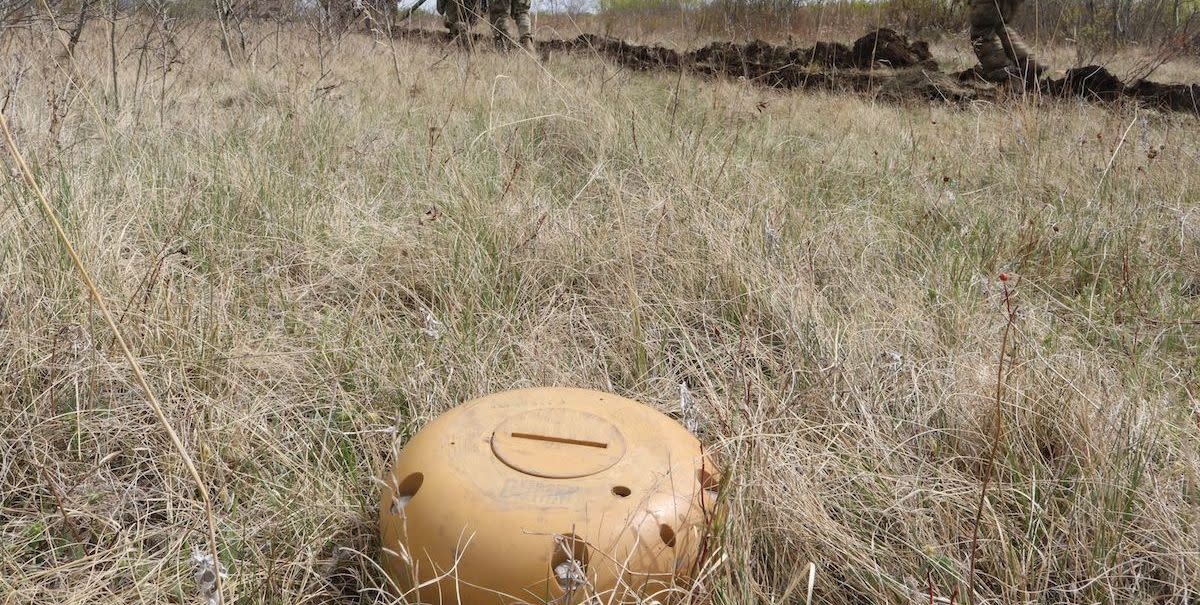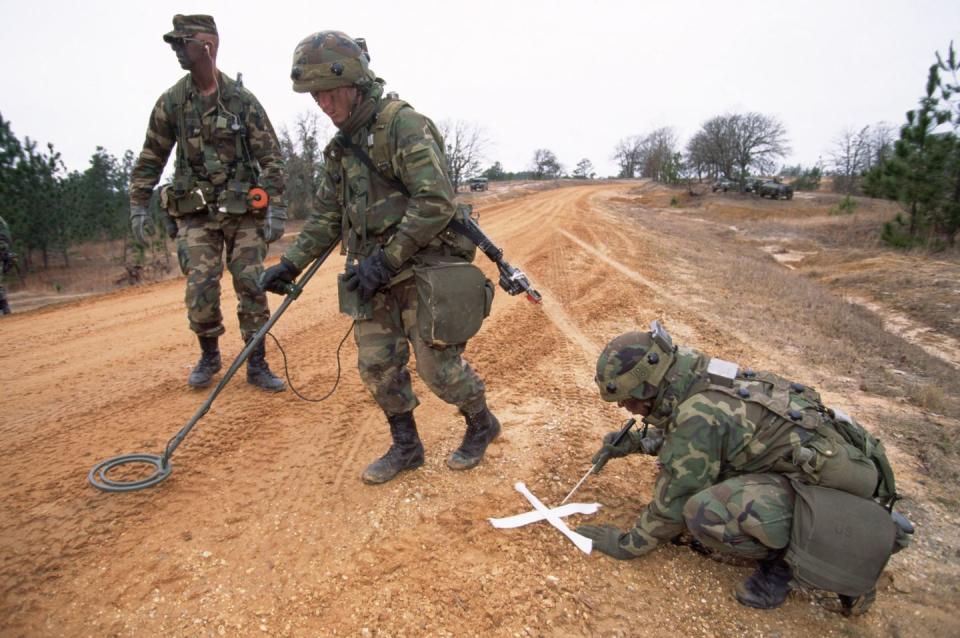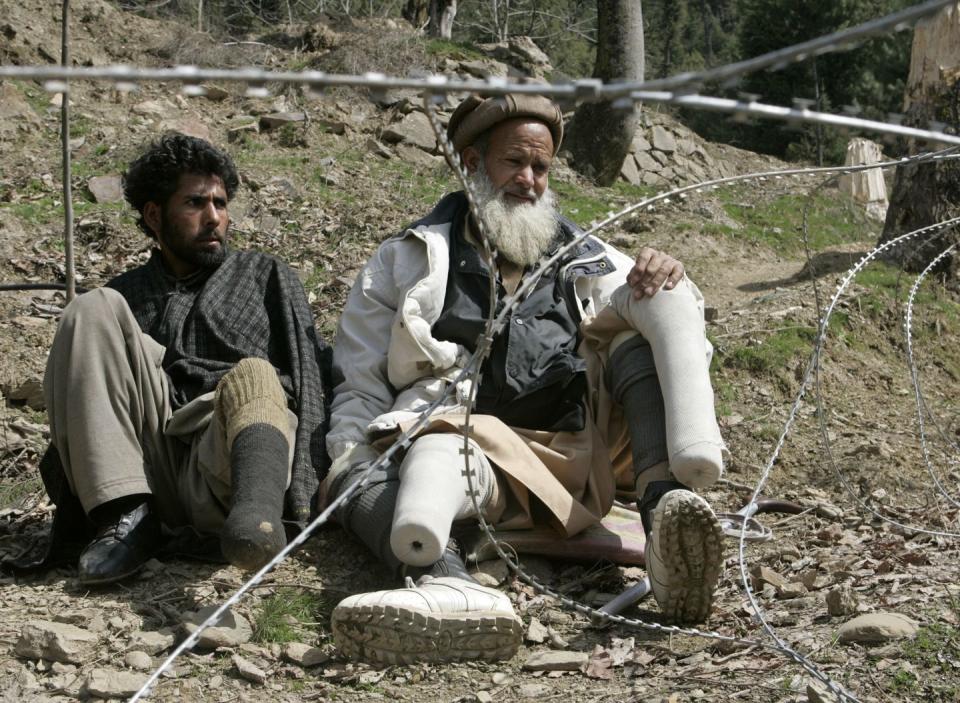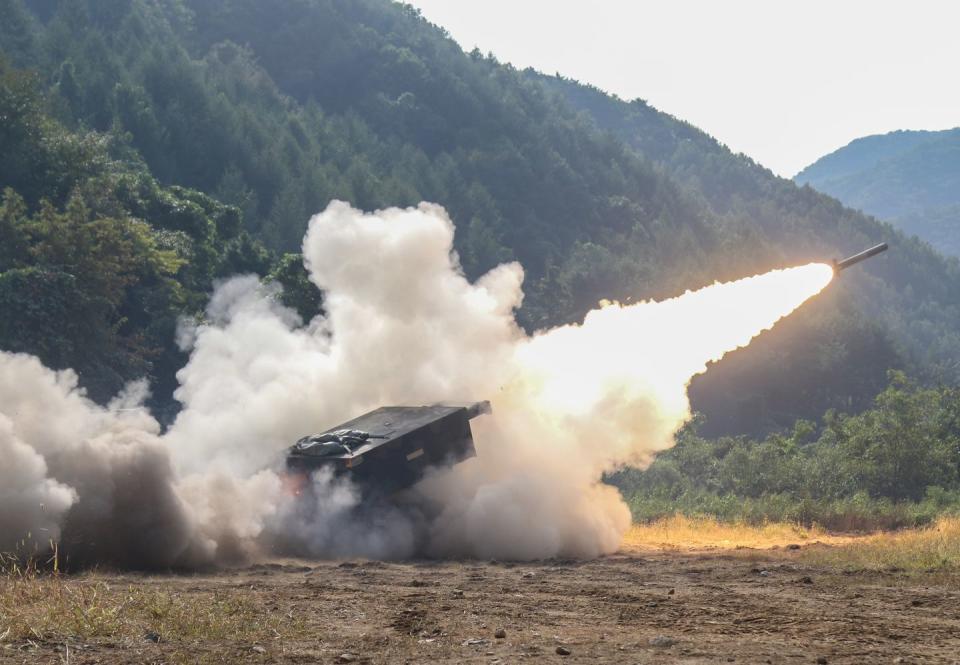The U.S. Army Is Building a Smarter Land Mine

The U.S. Army is working on a new generation of land mines and mine-like battlefield munitions. The weapons, all of which are designed to be left unattended on the battlefield, have to fulfill the sometimes competing interests of being useful against high-tech enemies while at the same time not becoming a long-term hazard to civilians.
The U.S. Army utilizes a wide variety of battlefield munitions. As Army Times writes, the service’s inventory runs from the Vietnam War-era Claymore mine to the new Gator anti-tank/anti-personnel mines. The service wants to replace all of them with a new generation of mines that can pose a credible threat to high-tech armies as well as “phone home” and report enemy troop movements.

Mines are munitions that are emplaced on the battlefield in order to modify enemy behavior. Mines are meant to slow down enemy forces, forcing them to gently pick through their route, giving friendly forces enough time to detect and then respond to them. Alternately, mines could force an enemy to avoid certain areas and take a particular path advantageous to the U.S. military. In some cases, mines like the Claymore can be used to augment defensive firepower, the defenders placing them on enemy routes of advance before the battle and triggering them by remote control.

The problem with mines is that they are easy to place but hard to keep track of and even harder to remove, especially when the number of mines starts running into the thousands or millions. Uncleared and abandoned minefields become a deadly threat to civilians, particularly scrap hunters and farmers triggering mines while tilling the land. Conflict zones in Europe, Southeast Asia, Africa, and the Middle East have seen significant civilian casualties from abandoned mines.
In the early 1990s, a groundswell of public opinion forced an agreement to limit mine use. The International Convention on the Prohibition of the Use, Stockpiling, Production and Transfer of Anti-Personnel Mines and on their Destruction, also known as the Ottawa Treaty, bans the manufacture, sale, and use of anti-personnel mines. The treaty has 164 signatories with only 32 countries holding out—including the United States. The U.S. contends there are some places, particularly the Korean Demilitarized Zone (DMZ) where mines are essential to defending friendly forces.

Despite its non-signatory status the U.S. still takes some measures within the spirit of the treaty. It has, for example, shifted away from the use of artillery submunitions—grenade-sized bomblets that spew in large numbers from artillery shells and rockets, spreading out over a wide area. The bomblets are designed to act like land mines if they don’t hit a target and must be cleared by explosive ordnance experts after the fighting is over.
According to the Army Times, the service’s future mine systems, “must have a 2 to 300km communications capability, an ability to be switched on and off, remotely modified self-destruct or deactivate mechanisms, self-report status so that users will know if they’ve been tampered with or if a mine went off.”
A major problem with communications capability is jamming by the enemy. If the minefield is left “off” and the enemy begins jamming, it could be difficult to turn the minefield “on.” There’s also the possibility that networked minefields could be hacked by enemy forces, rendering them harmless. Adding anti-jam and anti-hacking measures would boost the cost of what is supposed to be a low-cost, affordable deterrence system.
The cost may be worth it if the next-generation minefield can also radio back when it’s been tampered with or when a mine has detonated. It will also “detect, track, and engage” enemy vehicles. That turns a minefield into a wide area sensor, capable of telling friendly forces when the enemy is present. Once a headquarters unit receives word from a minefield the enemy is present, friendly forces can dispatch ground troops, aircraft, or even call in artillery on the precise location of the exploded mine.
Source: Army Times
You Might Also Like

